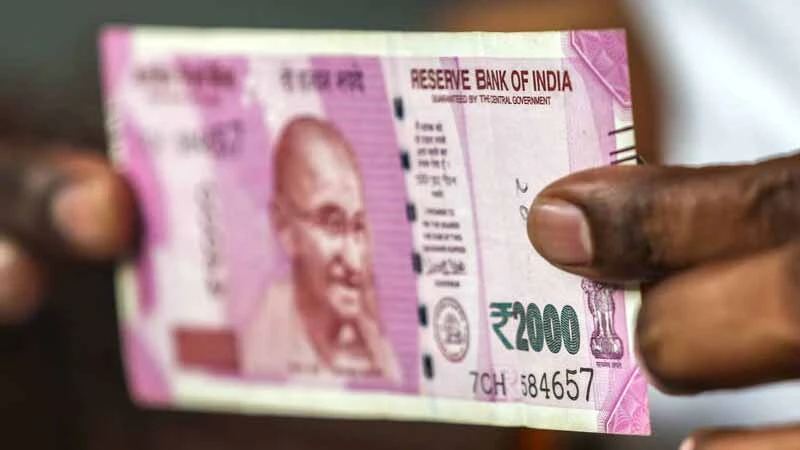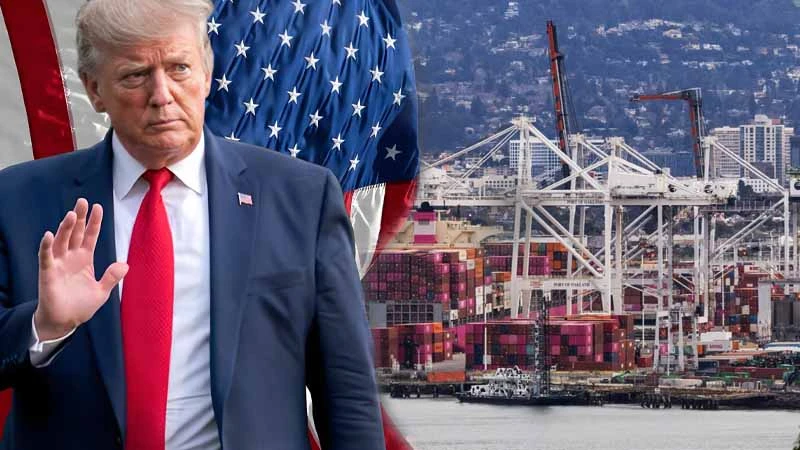The Indian Rupee Rises Sharply by 1%, Strong Central Bank Intervention Draws Market Attention, Economic Stability Signals Strengthen
As of February 15, 2025, the Indian rupee rose 1% against the US dollar in a single day, trading at 86.89. This rebound not only reversed the depreciation trend since the beginning of the year but also highlighted the Reserve Bank of India’s strong intervention and the market’s repricing of economic stability. Behind this exchange rate tug-of-war lies not only the intensive use of policy tools but also the structural challenges faced by emerging markets under the “impossible trinity”.
Policy Intervention: The Central Bank’s “Tug-of-War” and Market Doubts
Scale and Effectiveness of Forex Intervention
Between February 11-13 2025, the Reserve Bank of India sold approximately 11 billion US dollars in foreign exchange reserves to curb the rupee’s depreciation, marking the largest weekly intervention since the 2022 US dollar liquidity crisis. This action pulled the rupee’s exchange rate back from a two-year low of 87.20 to 86.89, but at the cost of depleting 1.2% of total foreign exchange reserves. As of the end of January, India’s foreign exchange reserves had dropped to 598 billion US dollars, the lowest level since June 2023.
Foreign Exchange Reserves Decline: In January 2025, India’s foreign exchange reserves decreased by 28 billion US dollars to 598 billion US dollars, the lowest level since June 2023.
Intervention Effectiveness: The rupee rebounded 1.8% within 48 hours after the intervention, but the volatility index (USD/INR 1M IV) remained as high as 12.5%, reflecting market skepticism about the sustainability of the policy.
The Monetary Policy Dilemma
On January 6, 2025, the Reserve Bank of India unexpectedly kept the benchmark interest rate unchanged at 6.5%, diverging from its inflation management objective—January CPI rose 5.8% year-on-year (near the central bank’s 6% tolerance ceiling), while core inflation remained high at 5.2%. This choice of prioritizing “exchange rate stability” over “inflation control” has further intensified capital outflow pressures.
Structural Pressures: Currency Fragility Under Triple Imbalances
Trade Deficit and Energy Dependence
In 2024, India’s crude oil imports rose 22% year-on-year to 176 billion US dollars, with the trade deficit widening to 3.1% of GDP. For every 10-dollar increase in Brent crude prices, India’s current account deficit worsens by 0.5 percentage points.
Debt Risks and Foreign Capital Outflows
Government Bonds: In January 2025, foreign investors recorded a net sell-off of 3.3 billion US dollars in Indian government bonds, pushing the 10-year bond yield up to 7.38%.
Corporate External Debt: Outstanding US dollar-denominated debt of India’s non-financial corporations reached 217 billion US dollars, with 35% maturing between 2025-2026.
Policy Credibility Challenges
Newly appointed central bank governor Sanjay Malhotra stated on February 12 that he would “allow greater exchange rate flexibility“, but intervention was carried out the following day. The mixed policy signals drove the risk reversal indicator (USD/INR 1M RR) up to 1.2%, the highest since 2023.
The Federal Reserve’s Policy Framework and Its Dual-Channel Transmission to the Indian Rupee
The adjustment of the Federal Reserve’s monetary policy, through the three channels of interest rate expectations, dollar liquidity, and global risk appetite, exerts a dual impact on the Indian rupee in terms of “exchange rate pricing” and “capital flows”. Since December 2024, the “hawkish rate-cut” framework, combined with the uncertainty of Trump’s 2025 policies, has been creating systemic shocks to emerging market currencies, while the volatility of the Indian rupee has been significantly amplified due to the country’s level of capital account openness.
The Exchange Rate Squeeze Effect of Divergent Interest Rate Expectations and Narrowing Yield Spreads
The narrowing of the US-India yield spread has intensified capital outflows: the yield on the US 10-year Treasury remained high at 4.2% in February 2025, while the yield spread with Indian sovereign bonds of the same maturity (7.1%) narrowed to 290 basis points, the lowest level since 2018. This has weakened the carry trade appeal of Indian assets, resulting in a net outflow of 42.85 billion rupees from the Indian stock market in the fourth quarter of 2024, with the monthly outflow further expanding to 60 billion rupees in January 2025.
It is worth noting that this round of yield spread narrowing shows a structural difference from historical patterns: past Federal Reserve rate cut cycles were usually accompanied by emerging market currency appreciation, but the current “inflation stickiness” has forced the Fed to maintain a “restrictive rate”, creating unique “passive tightening” pressure on emerging markets.
The Chain Reaction of International Oil Prices and Commodity Price Volatility
As the world’s third-largest crude oil importer, the Indian rupee is highly sensitive to energy prices. Geopolitical tensions in 2025 have made oil prices a hidden risk factor for exchange rate volatility.
Crude Oil Import Costs and Dollar Demand
Conflicts in the Middle East and fluctuations in US shale oil production have kept Brent crude oil prices hovering in the 85-90 US dollars per barrel range in February. India spends about 20 billion US dollars monthly on crude oil imports, and for every $10 dollar increase in oil prices, the trade deficit widens by 1.2%. This pressure forces companies to increase dollar holdings, further intensifying depreciation expectations for the rupee.
Commodity Price Transmission Effect
Apart from energy, India’s reliance on imports of gold and industrial metals also affects the current account balance. In 2024, the government raised the gold import duty to 15%, reducing related expenditures by 60%, but whether this measure can continue to curb demand remains to be seen.
Investors’ Focus: The Future Trend of the Indian Rupee and Policy Orientation
Federal Reserve Policy Developments
The market generally expects the Federal Reserve to begin cutting rates in June 2025. If the US dollar weakens, it will further ease external pressure on the Indian rupee. Conversely, if the timing of rate cuts is delayed, the rupee may continue to face volatility.
Energy Price Changes
Crude oil prices remain a key variable for India’s exchange rate stability. If tensions in the Middle East worsen or supply tightens, rising energy prices will exert renewed pressure on India’s current account and the rupee.
Reserve Bank of India’s Policy Stance
Investors are closely watching the Reserve Bank of India’s subsequent policy signals. If the central bank continues to combine exchange rate intervention with a prudent interest rate policy, it will help boost market confidence and support the relative stability of the Indian rupee.
Conclusion
The volatility of the Indian rupee is essentially a typical example of the “impossible trinity” dilemma faced by emerging markets—between exchange rate stability, free capital flows, and monetary policy independence, the Reserve Bank of India is attempting to find a new balance. For Asian investors, it is important to be alert to three channels of risk transmission: unwinding of carry trades triggered by a widening US-India yield spread, secondary inflationary shocks in the region caused by crude oil prices, and the impact of India’s import contraction on ASEAN export chains. Over the next 3-6 months, the USD/INR range of 85 to 90 will serve as a key litmus test for the resilience of emerging markets.
*The content of this article is for sharing and reference purposes only and does not constitute professional investment advice. Due to differences in individual circumstances and needs, you may contact the Cashback Island team or consult your financial planner for professional advice.
Frequently Asked Questions:
Q1: What measures do central banks generally take to intervene in the market?
To maintain exchange rate stability or ease abnormal market volatility, central banks usually adopt the following intervention measures:
Foreign exchange market intervention: direct buying and selling of foreign exchange, spot/forward market operations, swap operations
Interest rate policy adjustments: raising or lowering interest rates
Capital flow management: tightening restrictions on capital inflows or relaxing restrictions on capital outflows
Q2: Where can the real-time exchange rate of the Indian rupee against the US dollar be checked?
It can be viewed on the real-time exchange rate page of Google Finance or referenced through other trading tools/platforms that provide real-time exchange rate listings.
Q3: What currency is Rs?
Rs is the abbreviation for the Indian rupee (INR), which is India’s official currency. Rs stands for Rupees, and the common symbol is ₹. In international markets, it is usually represented as INR (Indian rupee).
Related articles
-
Since 2025, global financial markets have continued to focus on the monetary policy trends of the US Federal Reserve (Fed) and movements in the US Dollar Index. As a barometer of the international market, the performance of the US Dollar Index (DXY) directly affects asset prices and capital flows in...2025 年 3 月 18 日
-
2024 Q4 US Nasdaq Index plunged 3.6%, while the Hang Seng Tech Index fell 4.2% simultaneously, highlighting that the linkage between the two markets has deepened to the level of capital flows. Facing the Federal Reserve’s policy swings, the tech industry’s cyclical shifts, and rising geopolitical risks, Hong Kong stocks...2025 年 2 月 21 日
-
In February 2025, Donald Trump's 25% tariff on imported cars triggered an instant earthquake in the global supply chain. This trade policy, which has been labelled “America First 2.0", has not only forced multinational car companies to urgently reorganise production, it has also pushed the price of precious metals past...2025 年 2 月 21 日













